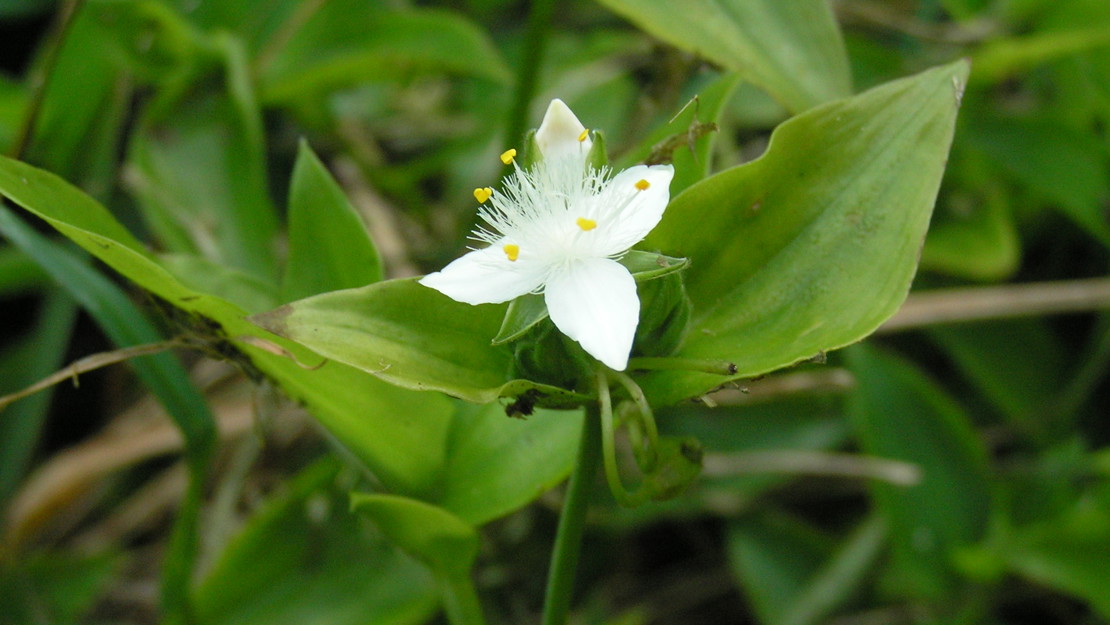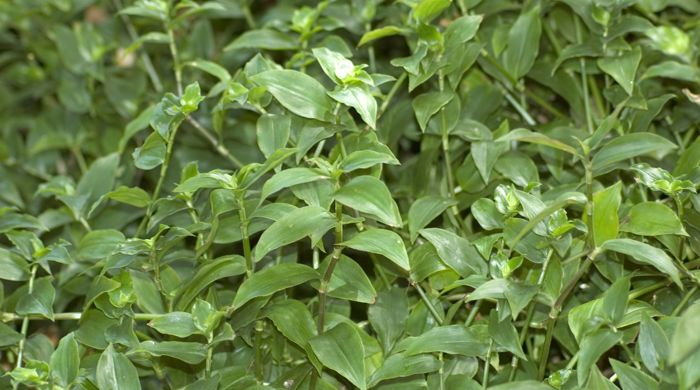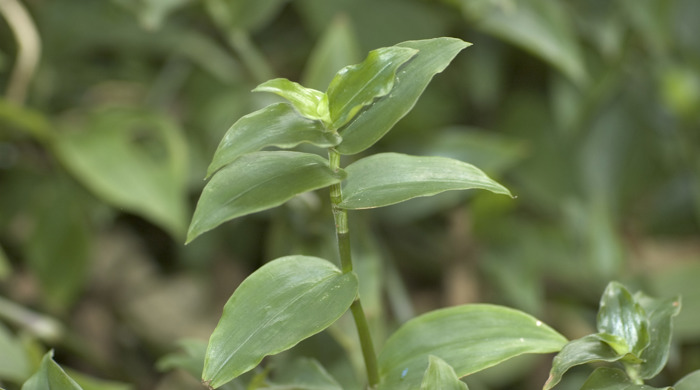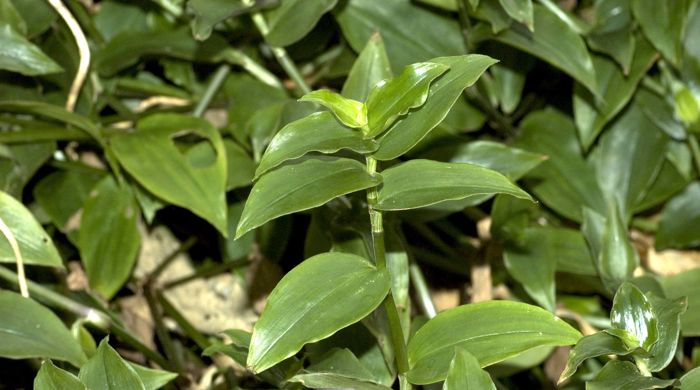Tradescantia fluminensis
Tradescantia
Family: Commelinaceae
Origin: South America

Regional Pest Management Plan (RPMP) status
- National Pest Plant Accord Species
- Whole region — Sustained control
General description
Perennial mat-forming herb < 60 cm tall. Leaves are shiny, < 6 cm long, ovate-elliptic and alternate. Flowers are white and borne in clusters in December – January.
What you need to know
To help protect our environment:
- you must not breed, distribute, release or sell tradescantia. As tradescantia is a National Pest Plant Accord species, these restrictions apply within the Auckland region and across the whole of New Zealand
- these restrictions on trade also apply to all cultivars of Tradscantia fluminensis, which include but are not limited to, Blushing maid, Golden Girl, Albiflora and Pink Princess
- you must not plant tradescantia within the Auckland region, unless you are transferring an existing plant on your land to another location within the boundaries of the same property
- you must destroy any tradescantia on land that you occupy if it has been planted in breach of the above rules and you are directed to do so by an authorised person.
Habitats
Forest, forest margins, cliffs, bluffs, riverbeds.
Dispersal
Vegetative spread from stem fragments, dispersed by water and livestock. Human-mediated dispersal through dumping of garden waste and contaminated footwear, soil and machinery.
Impact on environment
Forms dense mats, smothers and inhibits native vegetation regeneration. Reduces native seedling abundance and species’ richness. Potential to transform forest structure, composition and function.
Control
Site management
Follow up treated areas 3 times per year. Encourage natural regeneration of native plants or replant treated areas where possible after 2-3 treatments to establish dense ground cover and minimise reinvasion.
Recommended approaches
Physical control
Method: Rake, roll up or pull out.
Plant parts requiring disposal: All parts.
Disposal options: Compost in a composting weed bag for 12 months or more and tip out compost once all stems have decomposed and reuse the bag. Alternatively, remove to greenwaste or landfill.
Biocontrol
Check for presence of agents:
- Tradescantia leaf beetle (Neolema ogloblini).
- Tradescantia stem beetle (Lema basicostata).
- Tradescantia tip beetle (Neolema abbreviata).
- Brazilian yellow leaf spot fungus (Kordyana sp.).
For more information about how biocontrol works, see What is biocontrol?
Community agrichemical control recommendations
Certified Handler/Experienced agrichemical user: For infestations near water, foliar spray with 400ml glyphosate green per 10L of water. For terrestrial infestations, foliar spray with 60ml triclopyr per 10 Litres of water and 20ml penetrant in spring or summer.
Caution: When using any herbicide or pesticide please read the label thoroughly to ensure that all instructions and safety requirements are followed.






